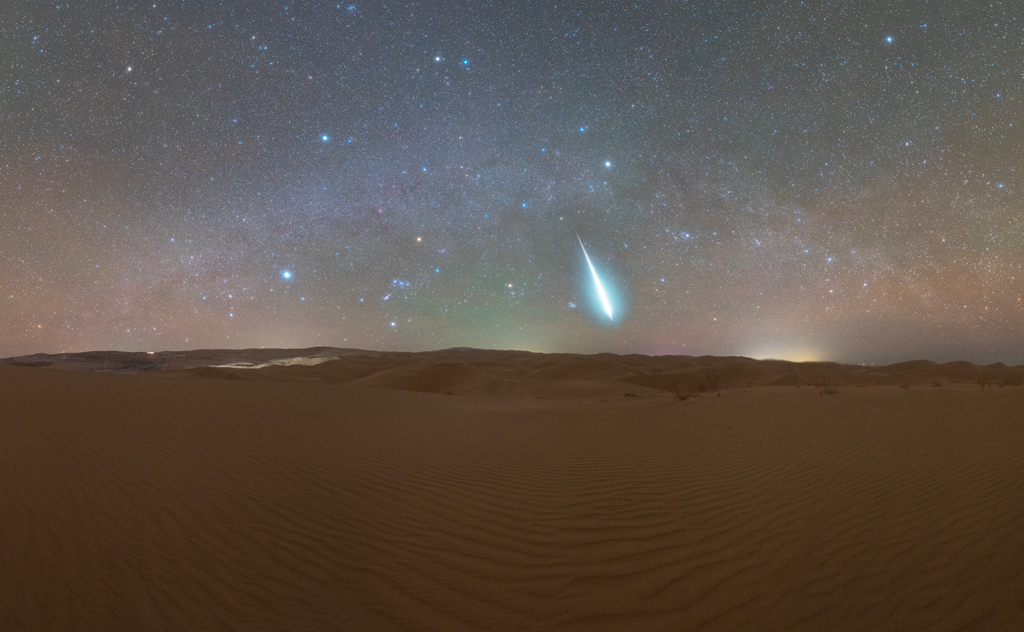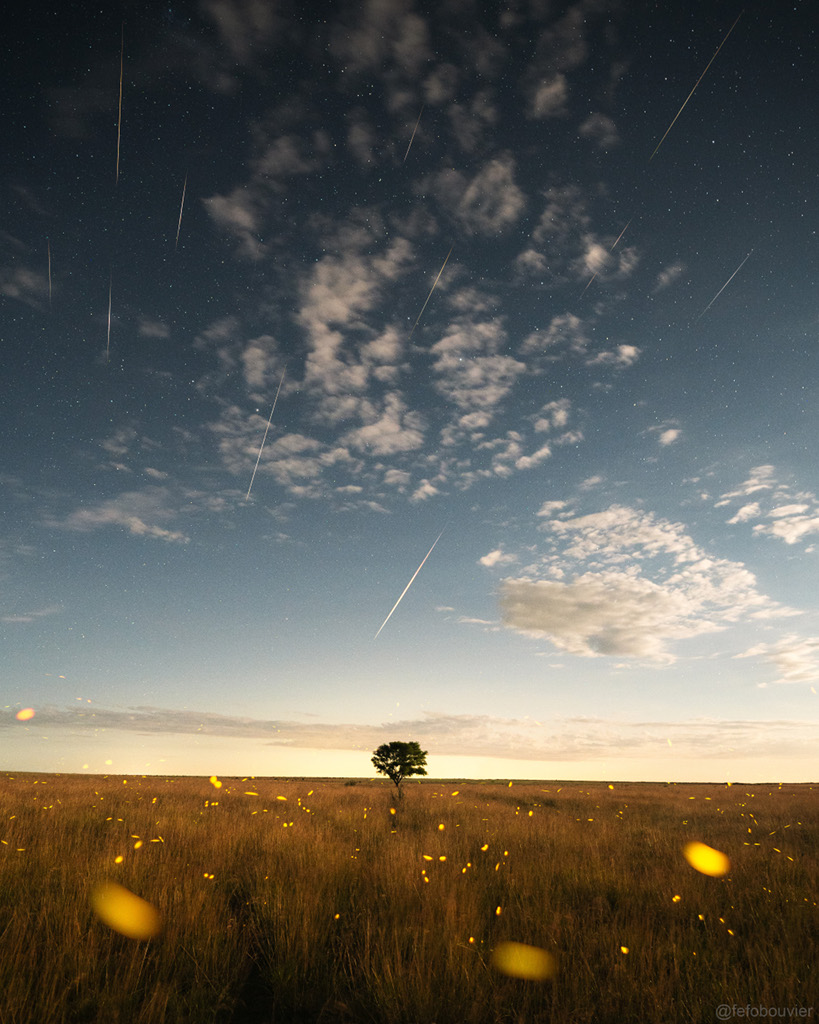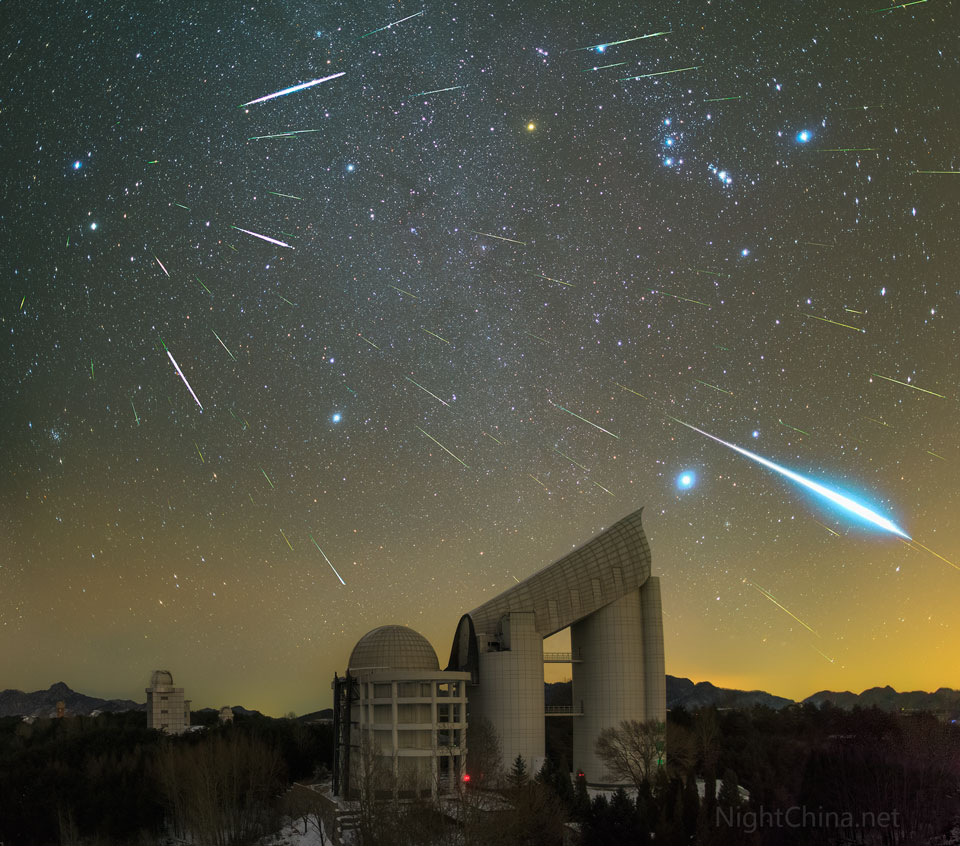双子座流星雨划过白雪覆盖的山峦
A picturesque winter landscape is seen before a dark but busy sky. A stream and a house are visible in the foreground, while snow-capped mountains are seen on the far horizon. In the sky are many stars and many streaks caused by meteors. Also some red gaseous nebulas are visible in the sky. Please see the explanation for more detailed information.
在繁星点点的夜空下,展现出一幅如诗如画的冬日景象。前景中可见一条小溪和一栋房屋,远处地平线上则是白雪皑皑的群山。夜空中繁星点点,流星划过天际,留下道道流星划过的痕迹。此外,还能看到一些红色的气体星云。有关更多详细信息,请参阅说明。










